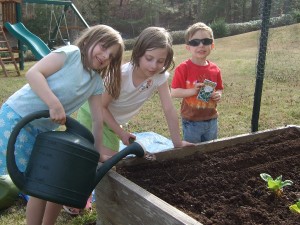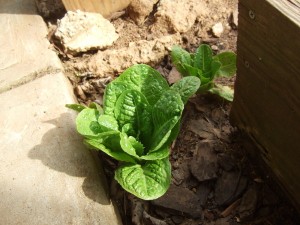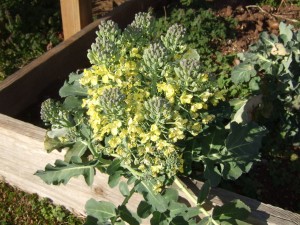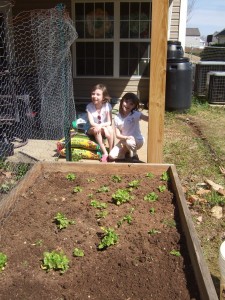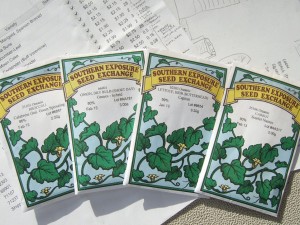
The first seeds in the ground include bibb lettuce, carrots, onions, and broccoli. We sowed them thick and will thin them later depending on our germination success.
After all the weeding and raised garden bed frame repair, it’s finally time to get some seed in the ground. The planting season is starting a little later than usual. The weather surprised us last week with a cold snap that could have done some damage if we’d had any early seedlings.
First, we prepare the soil by mixing in some of our compost. Just look at the deep, rich color of that soil we heaped at the end of one bed to allow our carrots plenty of depth to grown before hitting the naturally pour clay soil beneath. We’ve yet to have much success with carrots. Last year, we had some beautiful, thick greens cascading over three feet high. The carrots were grotesque in comparison. We only salvaged a half dozen and some of those were hollow inside. We’ll consider those previous results a learning experiences. I have high hopes for our carrot success this year.
We call this our salad garden. The bed will hold our previously transplanted lettuce that came up on its own, a new variety of lettuce we’ll be trying, carrots, and onions. Each child gets a chance to distribute the tiny seeds. We’re not too worried about spacing the seeds out because we can always thin the plants later. It’s better to plant a few too many than be disappointed with the bare spots left by seeds that fail to germinate.
Everyone loves filling the sprinkle cans from the rain barrel and giving the newly planted seeds a well deserved drink. We try to set ourselves up for success by providing good soil, in a well lite area. Letting water soak in deep encourages deeper, healthier roots to support and nourish the plants. We’ll continue to water every day until we see seedlings poking through the soil and then cut back depending on the spring rains.
We have another entire garden bed devoted to potatoes and broccoli. Two broccoli plants that survived the winter still live there but the will go to seed some. It’s unlikely we’ll see any more sizable heads form. To keep them company, we sprinkled enough seed to give us a dozen or more new plants. Meanwhile, the potatoes we left in the ground are sprouting. It will be exciting to find out what’s been going on underground.
Since we moved in, we’ve kept a compost pile for yard clippings. We decided to add kitchen scraps and now, with the recent addition of a pet bunny, we’ve include the missing ingredient from our compost. Digging up a bucket full to spread in the garden showed us the quality of soil by revealing colonies of plump, well-feed worms. The kids can’t resist the way the cute little worms tickle their hands and they help redistribute these wiggly fellows to a new home among our future vegetables.
